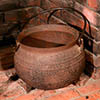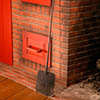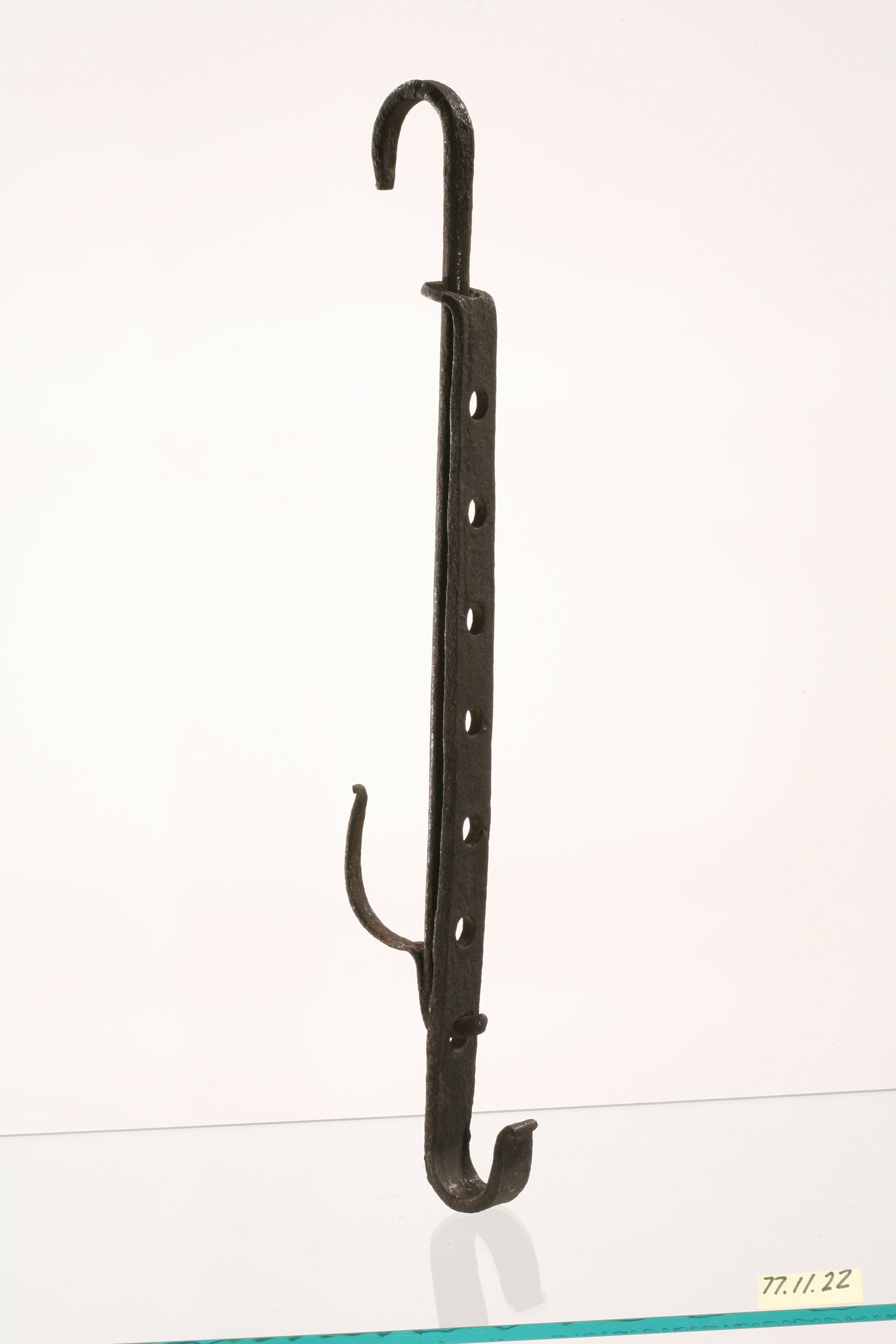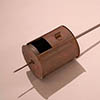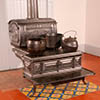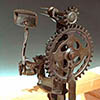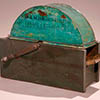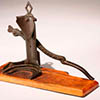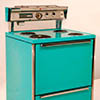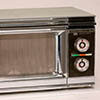Local Roots Menu Preview Evening DiningApril 14, 2014Be one of the first guests to try the brand-new spring Eagle Tavern menu. Local Roots Spring Evening DiningMay 2, 2014Come see how the French have influenced Michigan’s cuisine. |
Click on an artifact below to see how the foods we ate and the ways we prepared them have changed over the last three centuries.
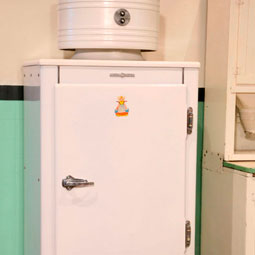
About 1934
Monitor-top Refrigerator
General Electric Co., Schenectady, New York
86.45.1
Gift of James Ruth
When reliable, small, electric refrigerators for the home were introduced in the 1920s, they made a world of difference to housewives. While many American homes had iceboxes since the late 1800s, the blocks of ice that cooled them had to be delivered frequently and their small capacity meant they couldn’t hold a lot of food.
Housewives in the 1930s who owned an electric refrigerator could shop for perishables like meat and vegetables less frequently and have their leftovers stay appetizing longer. And they didn’t have to constantly empty pans of melted ice or wait at home for the iceman to make deliveries--tracking dirt over a clean kitchen floor in the process. Electric refrigerators were more reliable and much less daily maintenance, and they became a necessity as more and more homes had access to electric power. Despite the Depression, Americans bought 10 million refrigerators during the 1930s. |
